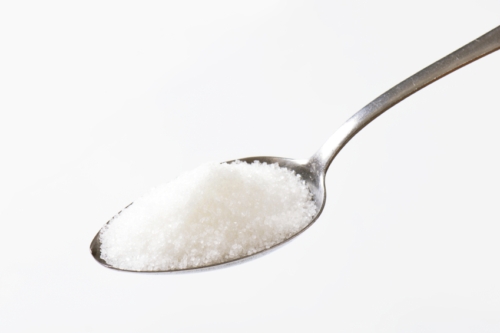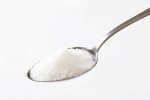
Study looks at Splenda and your health.
You may have likely seen the headlines already, the ones suggesting that a new study has linked sucralose, the artificial sweetener known to most as “Splenda”, has been linked to cancer.
Looking beyond the headlines to the actual study, which was led by one M. Soffritti of the Ramazzini Institute in Italy, shows an excellent case study in how to approach alleged health and nutrition findings with a rational and sensible eye.
The Soffritti Study, a Summary
- The researchers took over 800 mice and divided them into groups that were fed 0, 500, 2,000, 8,000, and 16,000 parts per million (ppm) of sucralose each day for their lifespan.
- The 2,000 ppm and 16,000 ppm groups showed an increased rate of leukemia and other blood cancers.
- From this, the researchers felt that there was sufficient cause to believe sucralose may not be as harmless as currently thought and that more research is needed to support its safety.
There are a few different reasons to take this study with a grain of salt (or, in this case, Splenda), but the first is that, when dealing with things like food safety or health impacts, one study does not mean that much overall.
Avoiding “Single Study Syndrome”
The conclusion of the Soffritti study reads, in part, that “more studies are necessary to show the safety of sucralose”. The problem with this statement is that those studies have been done.
Quite a lot of them. Sucralose, or Splenda, is one of the most studied food additives in the world and the FDA consulted over 110 studies, some of which were even done on humans (not just animals), when it made its determination that sucralose was safe.
These studies ran the gamut from examining sucralose for specific carcinogenic, neurological, and even reproductive impacts. Regulators do not make decisions based on any one study’s findings, especially if those findings seem to go against what has been rigorously proven dozens of times over.
Now, when dealing with any form of scientific consensus, there will always be findings that go against the most common conclusion. Is it possible for contrary findings to have discovered something other studies have missed? Yes. It is completely possible. Has it happened here? No, it most certainly has not.
Study Design Matters
When looking at bodies of scientific research, the results of various studies are only one part of the equation. One of the other components is methodology—how the research was actually carried out.
There are numerous factors such as participant size, testing method, sampling, and even data handling, that can affect how much credibility or skepticism should be applied to any given set of findings. This is why, when trying to challenge settled questions, it pays to be as rigorous as possible. The Soffritti study, unfortunately, is hardly rigorous and has two very glaring errors.
Lack of Hypothesis
Studies and experiments work best when they are done in order to answer a single question and the more specific, the better. A narrow hypothesis lets you tailor the study parameters more carefully and better isolate variables. The Soffritti study does not have a hypothesis.
Instead, it has a listed objective of, “to evaluate the carcinogenic effect of sucralose in mice, using a sensitive experimental design”. Now, this may seem like a specific area—looking at how sucralose affects cancer risk in mice—but it’s not.
The reason broad statements like this are problematic is because it casts too wide a net. Simply gathering a mass of data and looking at it from every possible angle creates a larger chance of a false positive being found, even one that could be considered statistically significant.
“Cancer” is a very wide subject that covers numerous types and subtypes of tumors, among other factors. By looking at the mice for any signs of carcinogenic effect, the researchers dramatically raised their chances of finding one, but also reduced the likelihood of their finding have any significance.
This issue is best illustrated by looking to an intentionally faulty study last year that made quite a few news outlets report that chocolate could help people lose weight.
However, the study looked at 18 different measurements ranging from weight to sleep quality, guaranteeing that at least one would result in statistically significant (but ultimately meaningless) findings.
Lack of Human Relevance
One of the problems with animal studies is that animal biology does not always give results that are translatable to humans. This is why, when conducting animal experiments, it is important to keep things as close to human values as possible.
For example, if you were testing whether sucralose could have carcinogenic effects on humans, it would make sense to give the animals levels of sucralose that would be equivalent to those found in the human diet. The Soffritti study, however, apparently doesn’t see things that way.
As mentioned above, they gave the mice doses of 500, 2,000, 8,000 and 16,000 ppm of sucralose per day for their lifespan. This is the equivalent of giving an adult human 500, 2,000, 8,000, and 16,000 mg/kg of sucralose.
For reference, the acceptable daily intake of sucralose by the FDA is set at 5 mg/kg of body weight. The Soffritti study has therefore given its mice 100 to 3200 times what is considered an advisable amount of sucralose every day of their lives.
This is a major problem because the dose makes the poison. Pretty much any substance the body absorbs, from vitamins to oxygen to regular water, will hurt or kill you if you take too much of it. Simply because something appears to cause a negative effect when ingested at a high level does not mean that it causes harm at lower levels.
Bottom Line: Splenda Does Not Contribute to Leukemia
- The Soffritti study gave mice dramatically higher daily doses of sucralose than is recommended, expected, or experienced in an American diet.
- The researchers then looked for any possible carcinogenic effect, which is a known recipe for false positives.
The scientific consensus develops after looking at multiple, rigorous, sound studies and evaluating the net conclusions that can be drawn from their combined results. While it is possible for new studies to challenge this consensus or add new dimensions or raise questions about current understandings, doing so is not easy since new findings have their credibility assessed in the context of all available knowledge on the subject. The fact that this study found a possible link between sucralose and leukemia in lab mice is not going to gain traction in the face of over a hundred other more precise studies that repeatedly show no health risks.
Take a look at our take on the Splenda debate.
Sources:
Bohannon, J., “I Fooled Millions Into Thinking Chocolate Helps Weight Loss. Here’s How,” Gizmodo web site, May 27, 2015; http://io9.gizmodo.com/i-fooled-millions-into-thinking-chocolate-helps-weight-1707251800.
Dovey, D., “How Much Water Does It Take To Kill You?” Medical Daily web site. December 3, 2014; http://www.medicaldaily.com/water-intoxication-just-how-much-h2o-does-it-take-kill-person-312958.
M. Soffritti, et. al., “Sucralose Administered in Feed, Beginning Prenatally through Lifespan, Induces Hematopoietic Neoplasias in Male Swiss Mice,” International Journal of Occupational and Environmental Health, January 29, 2016; http://www.tandfonline.com/doi/abs/10.1080/10773525.2015.1106075?journalCode=yjoh20&.
Sollid, K., et al., “Fast Take: Sucralose & Health,” FoodInsight.org, February 8, 2016; http://www.foodinsight.org/splenda-sucralose-ramazzini-soffritti-safety-cancer-study.
“Additional Information about High-Intensity Sweeteners Permitted for Use in Food in the United States,” U.S Food and Drug Administration web site, http://www.fda.gov/Food/IngredientsPackagingLabeling/FoodAdditivesIngredients/ucm397725.htm#Sucralose, last accessed March 14, 2016.













